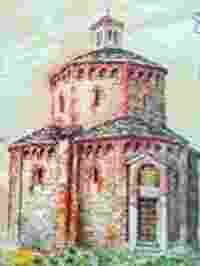Parable of the sterile fig

The fig is a symbol
The parable narrated by Luke (13,6-9) is a warning to Christians about the need to produce "fruit" through conversion and good works. The figure of the owner is identified with God the Father, while the winemaker represents Jesus himself, who intercedes for humanity.
Summary:
- Luke 13,6-9
- Exegesis parable of Luke
Join us
Parable of the sterile fig - Gospel of Luke
From the Gospel of Luke Chapter 13 Verses 6.9
Disse anche questa parabola: "He also said this parable: "A man had a fig tree planted in the vineyard and came to look for fruit but found none. Then he said to the winemaker: Behold, it is three years that I have come to look for fruits on this fig tree, but I find none. "Why should he exploit the land? But he replied:" Master, leave it again this year until I hoe it around and put the manure in it and we will see if it will bear fruit for the future".
Parable exegesis of the barren fig tree Luke [13:6-9].
The Parable uses the image of the fig tree to announce the need of the Father to see in men the good fruits, and the mercy that the Father wants to use to humanity through the Christ, and at the same time it is to reveal that God waits with patience the conversion of the wicked, but when the hour of punishment comes, it shows inexorable, if it is not appeased by penance. The fig tree was already an image of Israel in the prophets: Os 9,10; Mi 7.1; Jer 8.13 [2].
In particular, the quotations of Micah and Jeremiah refer to unsuccessful figs, referring to the infidelity of the people of God. The fig tree is a common tree in Palestine, and here in the parable it represents the Jewish people, who did not render to God any fruit despite all the care used. The vines were then particularly suitable places for the fig tree, and therefore the owner's expectation of the fruits is justified.
I have been looking for fruits on this fig tree for three years, but I can't find any. Three years is more than enough for the fig tree to bear fruit. The owner therefore had all the rights to expect to find them. These three years represent the long period of time, which God granted to the Jews to convert to him.
Cut it. Why must he use the land? The plant that does not bear fruit, but only clutters the ground, is condemned to cutting.
Master, leave it again this year until I hoe it around and put the manure in it and we'll see if it will bear fruit for the future; if not, you'll cut it. This compassionate cultivator who implores a postponement to punishment is Jesus Christ. The year, which still comes, represents time, which runs from the public prosecutor of Jesus until the destruction of Jerusalem. During this interval Jesus, through his miracles and his doctrine and through the preaching of the Apostles, made a last attempt to recall the Jewish people on the right path, but to no avail. The Jews were not converted, and 40 years after the death of Jesus, Jerusalem was destroyed, and the people largely killed and the few survivors were dispersed among all the nations. The wait for this year: is the theme of the year of grace (see Lk 4:19), to be linked to the announcements of the jubilee (Lev 25,8-17), which provided for the liberation of the slaves and the return of the land to the original owners.
It should be noted that although the parable refers directly to the Jewish people, it still serves as a reminder to all Christians not to abuse the goodness and long-suffering, with which God expects from them fruits of penance.
However, the parable does not even allow us to think that there is always time and that God's patience is limitless: God is certainly patient, but man cannot program it or set deadlines. As elsewhere (Merciful Father, Lk 15: 11-32), the parable is interrupted before the end, we do not know what happened at the end of that fig tree or if there is still room for the return of Israel.
